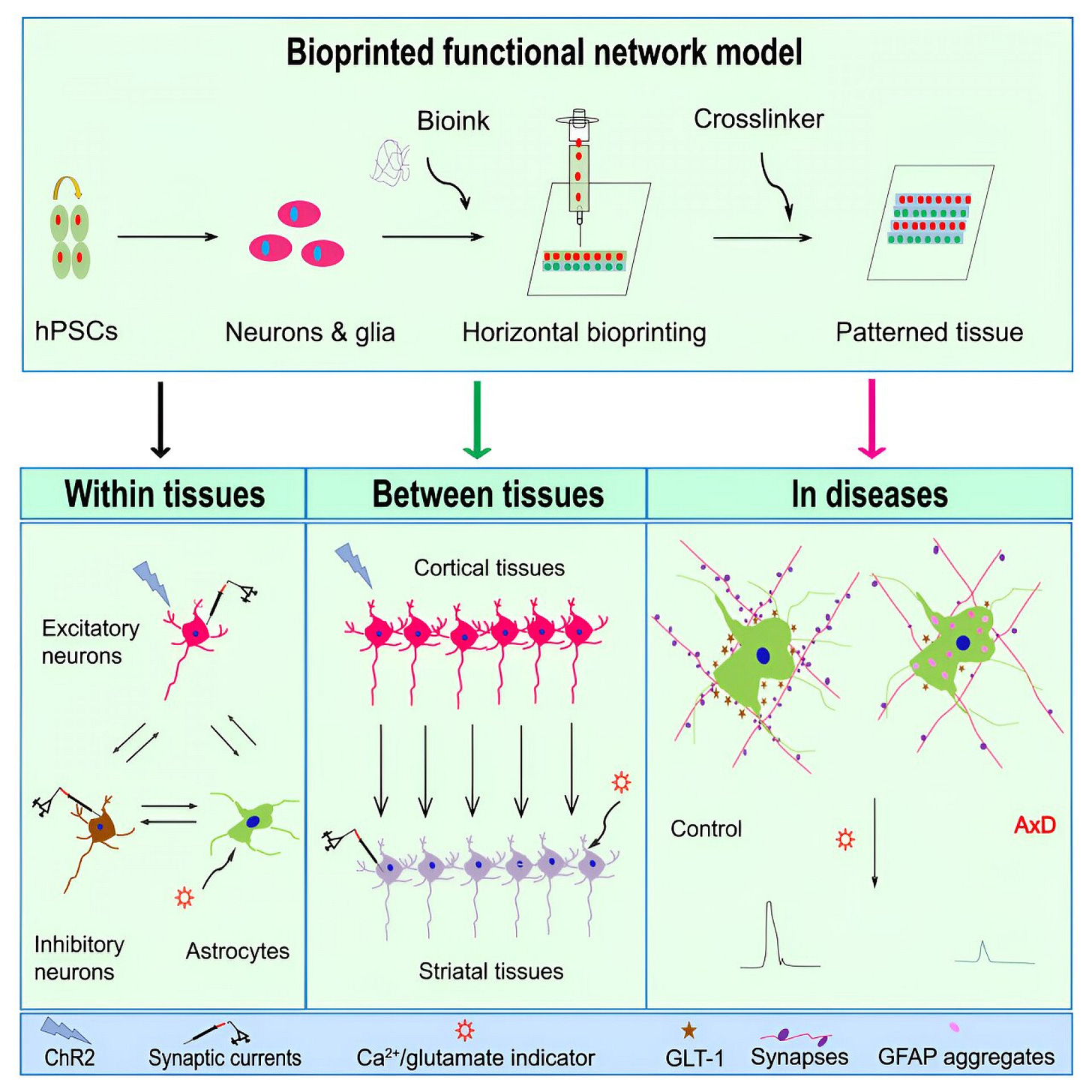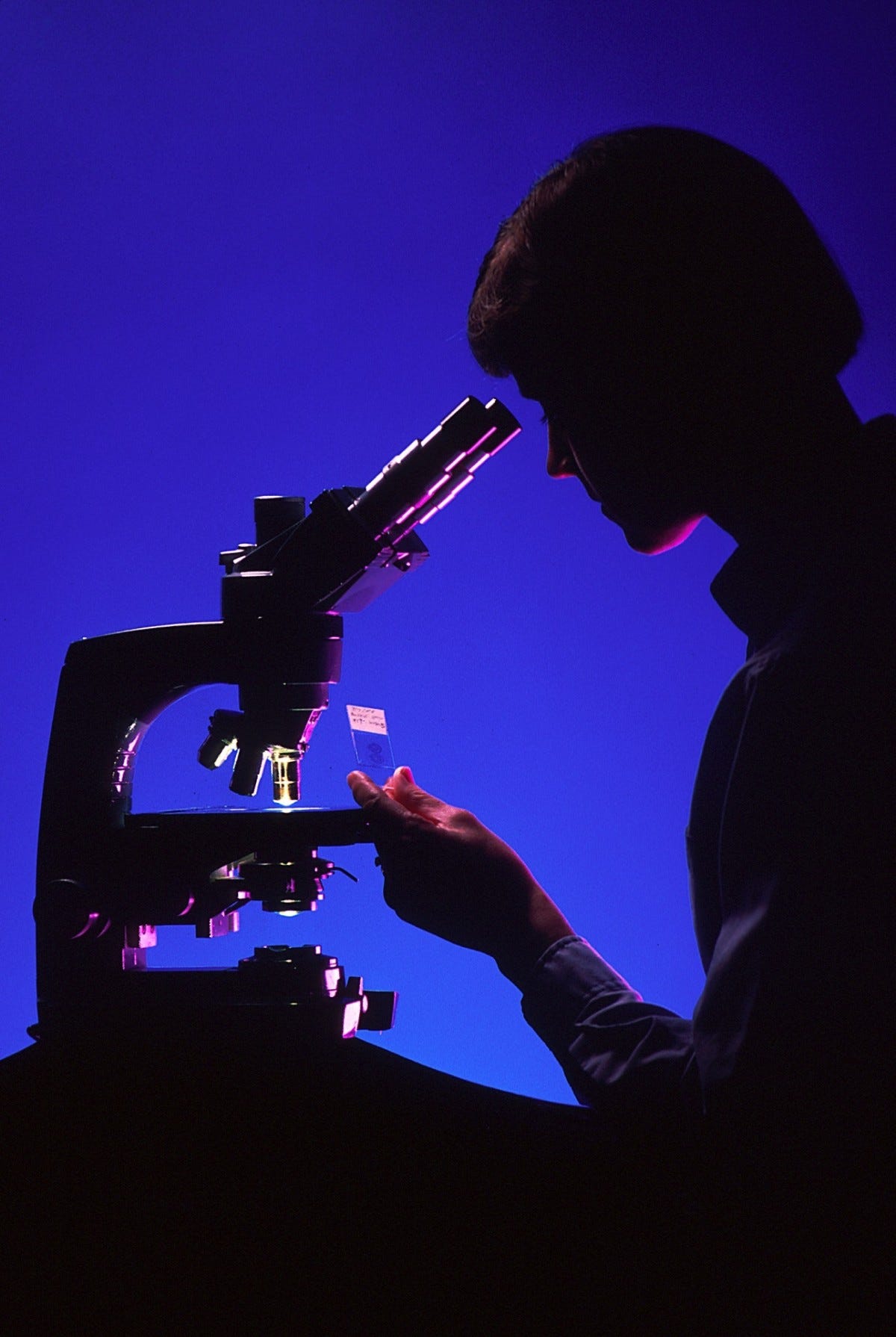Sci-Ed Update 312
Cell secretions in a bowl, course discomfort is good, 3D-printed brain, red-wine headaches, rest takes work, curing autoimmunity, dendrites shape neural response, and more!
Microscopic Bowls Uncover the Secrets of Protein Secretions

Cells secrete a range of proteins such as antibodies and growth factors that affect human health, but even within a specific cell type, some cells secrete more protein than others.1 Scientists have struggled to establish links between the genomes, transcriptomes, and functional outputs of cells, which presents a key challenge for researchers developing cell therapies. How can they create an effective therapy if they can’t identify which cells will produce the most therapeutically relevant protein?
In a recent study published in Nature Communications, bioengineers and immunologists joined forces to develop microscale hydrogel particles with approximately 35-micrometer diameters and bowl-shaped subnanoliter cavities.2 These nanovials can be used to measure protein secretion, transcriptome data, and surface markers from individual cells. The team demonstrated that these nanovials can reveal molecular signatures associated with secretion of the antibody immunoglobulin G (IgG) from B cells. Using this approach, scientists can identify subpopulations of cells that secrete more beneficial proteins and leverage them for developing therapies.
Kevin Patton comment→ I love opportunities to briefly let students know how cells are studied—especially the latest techniques. I hope it will spark curiosity and appreciate the process of human science.
Read more→ AandP.info/dtm
First functional human brain tissue produced through 3D printing

The first functional 3D-printed brain tissue has been developed to examine the human brain's function and study various neurological disorders.
According to experts at the University of Wisconsin-Madison, printed tissue can "grow and function like typical brain tissue."
This 3D-printed brain model might be useful in studying various neurological and neurodevelopmental problems, including Alzheimer's and Parkinson's disease.
"This could be a hugely powerful model to help us understand how brain cells and parts of the brain communicate in humans," said Su-Chun Zhang, professor of neuroscience and neurology at UW–Madison's Waisman Center.
Read more→ AandP.info/1r9
Is it true that red wine causes headaches?
Many people complain of headaches after drinking red wine.
Possibly millions — many millions — of people suffer from these headaches, said Morris Levin, a neurology professor and the director of the Headache Center at the University of California at San Francisco.
Research supports anecdotal evidence that alcohol appears to trigger headaches for some people. In one meta-analysis, red wine was the most frequently reported culprit, followed by spirits, white wine, and beer or sparkling wine.
There seems to be an even stronger association among those with headache disorders such as migraine, said Chia-Chun Chiang, a headache specialist and assistant professor of neurology at Mayo Clinic. In a study of nearly 2,200 migraine sufferers, about 1 in 3 reported that alcohol triggered attacks and most — about 78 percent — said that wine, particularly red wine, led to migraine attacks, though, for most, the attacks were not consistent.
Read more→ AandP.info/pao
How Dendrites Shape Neuronal Response

Researchers made a groundbreaking discovery in understanding the brain’s neuronal variability, with significant implications for both neuroscience and AI development. Their study unveils how dendrites, the neuron’s antennas, control the variability in neuronal responses.
This research not only advances our understanding of how neurons process variable inputs but also offers a new perspective for AI developers in mimicking brain-like computation.
Key Facts:
The study focuses on how dendrites control the variability of neuron responses, a key aspect of synaptic plasticity.
Zachary Friedenberger’s mathematical expertise was pivotal in developing a model for simulating neuronal networks with active dendrites.
The findings provide critical insights into biological computation, valuable for both neuroscientists and AI developers.
Read more→ AandP.info/34x
Rest Takes Hard Work
There are few things better for us than regular rest. Whether it's breaks during the day, hobbies that take our mind off work, weekly sabbaths or annual vacations, routines that layer periods of work and rest help us be more productive, have more sustainable careers, and enjoy richer and more meaningful lives.
Too often, rest gets a bad rap in our always-on, work-obsessed world. It's also the case that learning to rest well is actually hard. Why is that? And how can we rest better?
Read more→ AandP.info/vd0
Can autoimmune diseases be cured? Scientists see hope at last

Researchers have been trying for more than 50 years to tame the cells that are responsible for autoimmune disorders such as type 1 diabetes, lupus and multiple sclerosis. Most of the approved therapies for these conditions work by suppressing the entire immune response. This often alleviates symptoms but leaves people at elevated risk of infections and cancers.
But for decades, immunologists have hoped to restore what’s known as tolerance — the immune system’s ability to ignore antigens that belong in the body while appropriately attacking those that don’t. In some cases, that means administering the very antigens that the rogue cells are trained to attack, a strategy that can deprogram the cells and dampen the autoimmune response. Other researchers are trying to selectively wipe out the problematic cells, or to introduce suppressive immune cells that have been engineered to target them. One approach that relies on engineered immune cells was used to treat 15 people with lupus or other immune disorders with surprising success1. One participant has been symptom-free for more than two and a half years.
Read more→ AandP.info/xv8
Why Do A&P Students Hate Histology? And How Do We Fix That?
Host Kevin Patton discusses the fact that many students hate histology. And perhaps even some faculty. Are there any ways to fix that? Kevin thinks he may have found a breakthrough idea.
00:00 | Introduction
01:20 | Sponsored by AAA
02:25 | Why Do Students Hate Histology?
16:27 | Sponsored by HAPI
17:06 | Birding For Tissues
39:15 | Sponsored by HAPS
40:14 | A Breakthrough
51:25 | Staying Connected
To listen to this episode, click on the play button above ⏵ (if present) or this link→ theAPprofessor.org/podcast-episode-113.html
Learning to Accept Discomfort Could Help You Thrive
It's important to first define the idea of turning toward discomfort. I'm not advocating for people to put themselves in dangerous or excruciating positions. But when we push ourselves into challenging or discomfiting situations, much like trainers who push athletes just past their comfort zone to make gains, learning often happens. Indeed, a 2022 study involving more than 2,000 people demonstrated that the participants who were explicitly encouraged to push themselves into awkward, uncomfortable situations across multiple domains—including taking improv classes to boost self-confidence and reading about opposing political viewpoints—later reported the greatest degree of personal growth.
Read more→ AandP.info/o9b
Kevin Patton comment→ I don’t think our A&P students know how to embrace the difficulty of learning anatomy & physiology, nor do they often appreciate what else they’ve gained by succeeding in the course.






